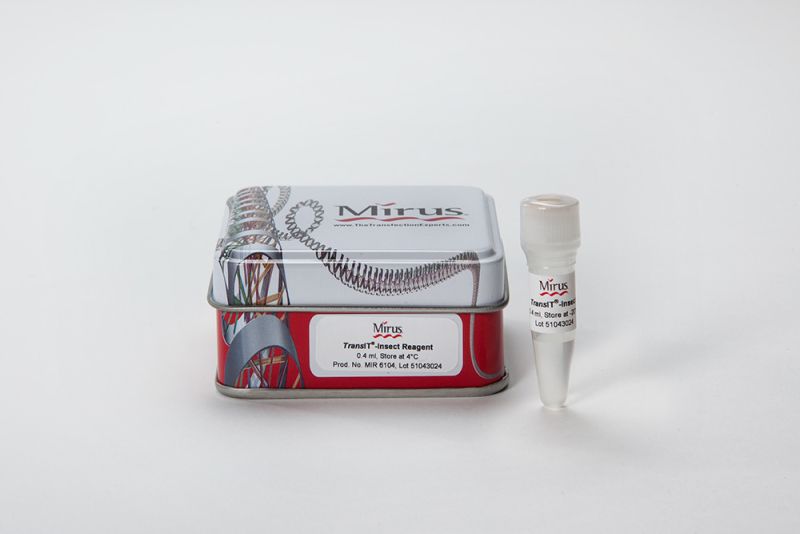TransIT-Insect Transfection Reagent
TransIT-Insect Transfection Reagent
Superior transient transfection for high yield baculovirus titers in insect cells
Insect cell expression is a platform used to produce proteins with simple post-translational modifications. Transient transfection and recombinant baculovirus production are commonly used methods for insect cell expression.TransIT®-Insect Transfection Reagent is an animal-origin free transfection reagent specifically optimized for high gene expression in a variety of insect cell types that offers:
- Exceptional DNA Delivery– In insect cell types including Sf9, High Five™ and S2
- High Baculovirus Production– Ideal for baculovirus expression in insect cells
- Serum Compatibility– Non-liposomal, animal-origin free formulation that eliminates media change
- Better Value– Low reagent amounts required per transfection
Technical Product Literature
Full Protocols
TransIT®-Insect Full Transfection Protocol (PDF)
Quick Reference Protocols
TransIT®-Insect Quick Ref Protocol (PDF)
SDS
Optimization Protocols
Figures and Data

Efficient Transfection of Baculovirus Genomic DNA Using TransIT®-Insect Reagent. Transfections were performed in 6-well plates with 5 x 105 Sf9 cells per well using TransIT®-Insect Transfection Reagent at the reagent-to-total DNA ratio of 3:1 (µl:µg). Cells were co-transfected with 0.5 µg of ProGreen™ baculovirus genomic vector DNA (AB Vector) encoding green-fluorescent protein (GFP) and 0.1 µg of pVL1393 transfer vector (AB Vector). (A) Fluorescence and phase contrast images were taken at 6 days post-transfection using a Zeiss S100 fluorescent microscope. Merge shown in (B).

TransIT®-Insect Outperforms Competitor Transfection Reagents. Insect cell lines (A) Sf9, (B) High Five™, and (C) Drosophila S2 cells were transfected in 96-well plates with 0.1 µg of a luciferase expression plasmid driven by an hr5 enhancer/IE1 promoter using the designated reagent at the indicated reagent-to-DNA ratios (µl: µg). Luciferase expression was measured at 48 hours post-transfection. Sf9 and High Five™ cells were cultured and transfected in serum-free media formulations; S2 cells were in serum containing medium. Error bars represent the standard error of the mean for triplicate wells.

Superior Recombinant Protein Expression in High Five™ Cells Using TransIT®-Insect. High Five™ cells were transfected in 6-well plates with 2.5 µg of a GFP expression plasmid driven by an hr5 enhancer/IE1 promoter using the designated reagent at the indicated reagent-to-DNA ratios (µl: µg). Total soluble cell lysates were prepared from cells 72 hours post-transfection. Lysates from 100 µl culture were analyzed by SDS-PAGE and Coomassie blue staining; cells alone (untransfected) is shown as control. Expressed GFP containing 6X His, S, and HSV tags (~38 kDa) was clearly detected in the lysate from the cells that were transfected (*) with the highest level of expression observed at TransIT®-Insect:DNA ratio of 2:1.

TransIT®-Insect Yields Increased Protein Expression Over Time. Insect cell lines (A) Sf9, (B) High Five™, and (C) Drosophila S2 were transfected in a 96-well plate with 0.1 ug of a luciferase expression plasmid driven by an hr5 enhancer/IE1 promoter using the TransIT®-Insect Transfection Reagent at a reagent-to-DNA ratio of 2:1 (µl: µg). Luciferase expression was measured at three time points, 24, 48 and 72 hours post-transfection. Sf9 and High Five™ cells were cultured and transfected in serum-free media formulations; S2 cells were in serum containing medium. Error bars represent the standard error of the mean for triplicate wells.


